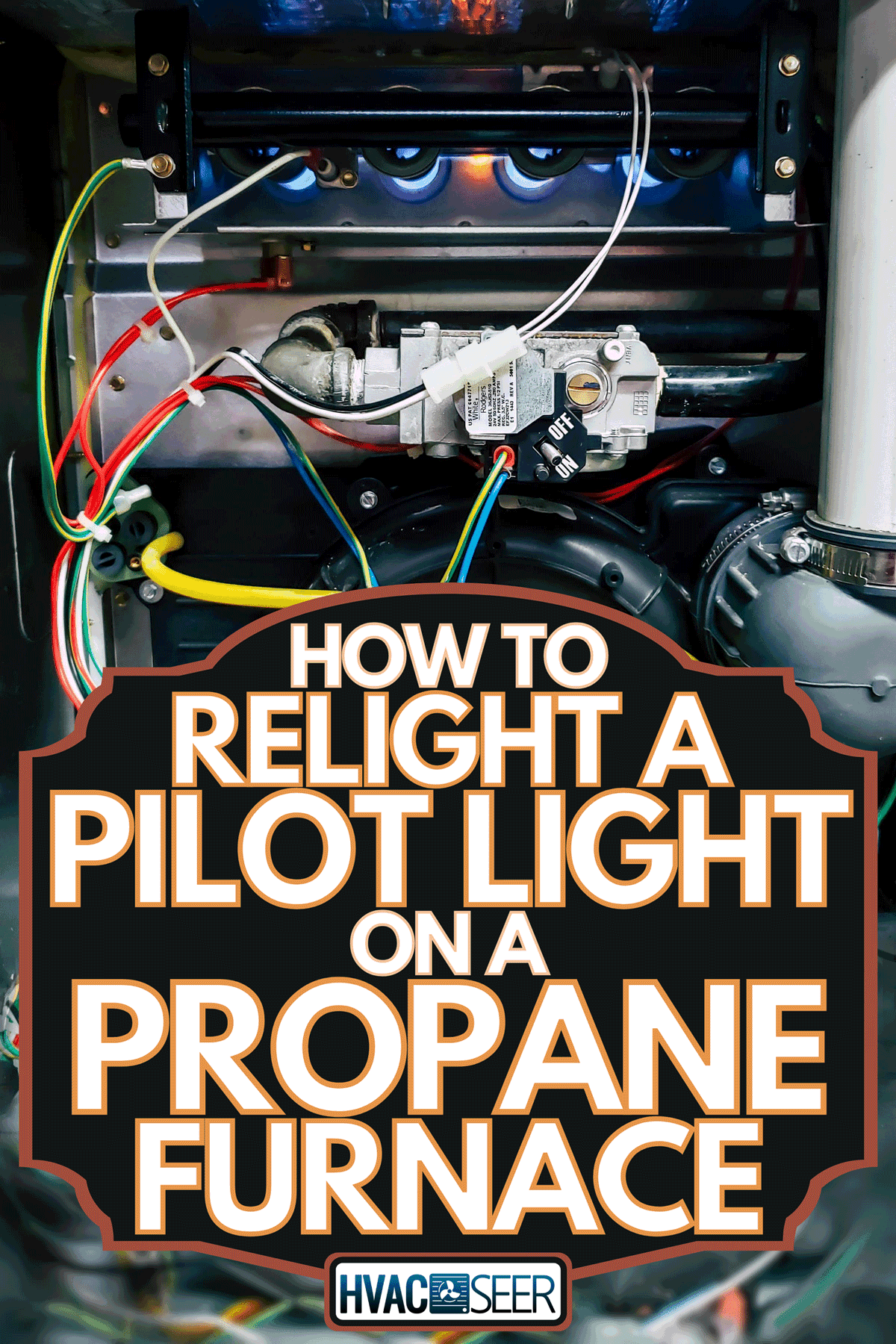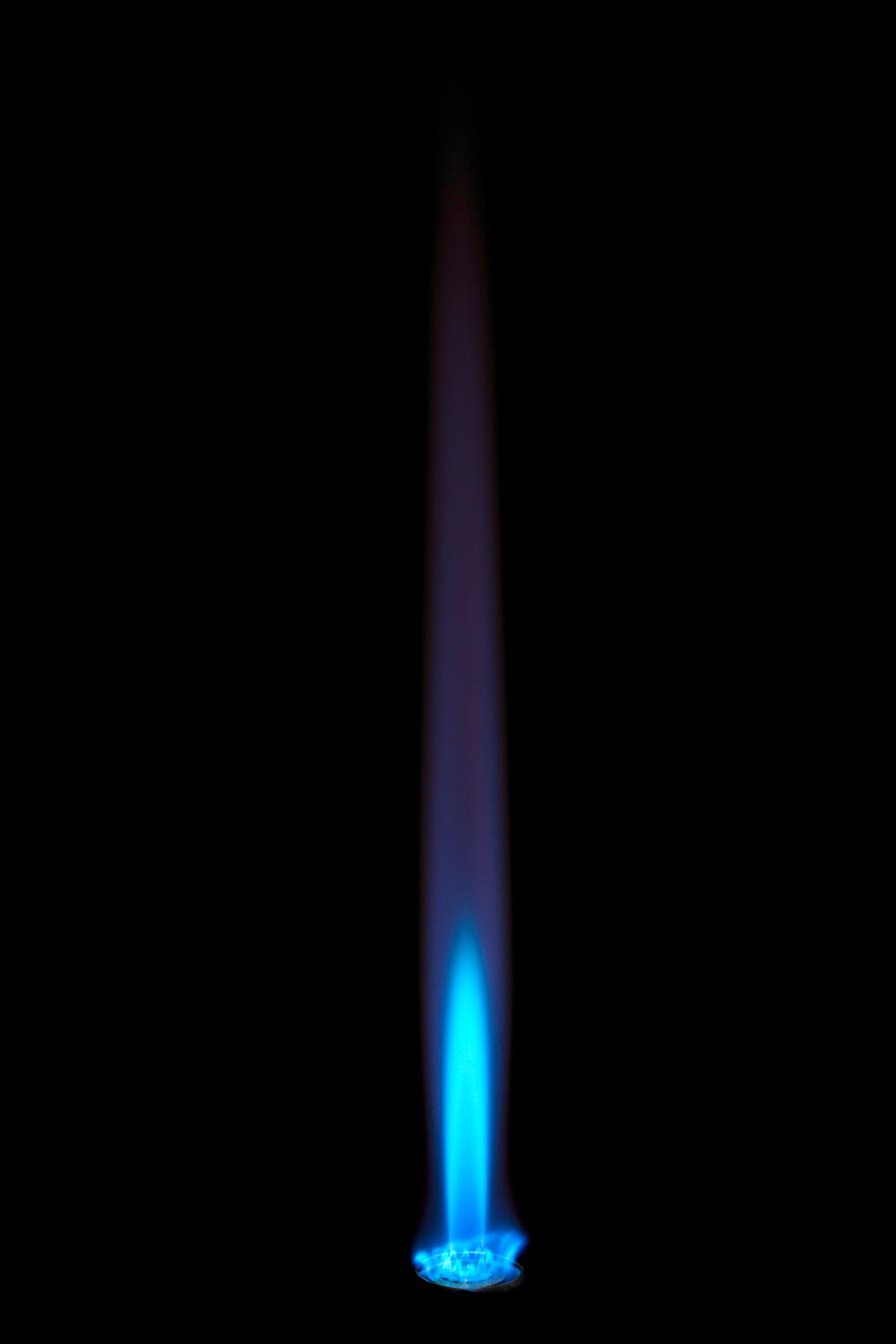Though propane furnaces have the reputation of being economical and efficient, they do raise a common question that has been the cause of worry for many. You may be wondering how you'll relight the pilot light when it goes out on your furnace. We have thoroughly researched this question and have found some answers.
If the pilot light goes out on your propane furnace, you should always take the first action to turn off the gas going into the furnace or turn the gas control knob to the off position. The following are the best practices for relighting your pilot light.
- Do not relight the pilot light if a strong odor is present
- Determine if your furnace uses a pilot light
- Locate the pilot light, gas controls, and ignition switch
- Turn gas to the pilot position and light the pilot
Furnaces can and do vary a little on the position and components of the pilot light system. Keep reading as we go over the differences and break down the steps for lighting each type of pilot light. We'll discuss how to tell if your furnace has a pilot light and what to do if it keeps going out.

Can I Relight The Pilot Light By Myself?
Always exercise extreme caution and consult your furnace's owner manual for best practices. Consult a professional if you have inspected your furnace and are still unsure about the process. However, relighting the pilot light is usually a simple process and, in most cases, can easily be done yourself.

Do Not Relight The Pilot Light If A Strong Odor Is Present
Before getting started, study your furnace. If there is a strong gas odor, turn off the incoming gas and consult a professional. You may have a leak or another serious issue. Propane is highly flammable, and trying to light the pilot light when gas is present could result in injury.
Turn the gas to the off position and allow the gas to dissipate for at least five minutes before attempting to light the pilot light.
Determine If Your Furnace Uses A Pilot Light
Your furnace may have been showing signs that the pilot has gone out, only to find out when you open it up that yours does not have one. Furnaces that have been manufactured in recent years don't use a pilot light.
If your furnace was produced later than 2010, most likely, it would use an automatic or electric ignition. You can tell if you are using a furnace with a pilot light or not by the appearance of the gas controls.
If the gas control has a position labeled pilot and off and on, you have a pilot light. A switch that only has off and on indicates an electric ignition.
Locate The Pilot Light, Gas Controls, And Ignition Switch

The pilot light on a propane furnace will be set up the same way as on a natural gas furnace. The best way to find your pilot light is to follow the gas line into the furnace. You'll have a control that is usually a round knob. On some furnaces, you'll see a red ignition switch in addition to the round gas control.
Turn Gas To The Pilot Position And Light The Pilot
For most setups, you'll turn the gas to the pilot position, which releases the gas, and then if there is a red ignition switch, you would need to press it repeatedly until the spark catches.
You may need to press and hold the control switch in the pilot position. You'll hear the gas flow. Once ignited, wait a moment for the whole thermocouple to heat, and then turn the gas on. The following video shows how to light a Williams wall heater pilot light.
If there is no ignition switch or you are unable to ignite using the switch, use a long instrument to light the pilot light. For some furnaces, you may need an extra-long handle. For some wall units, an extended lighter will do. This lighter is great for pilot lights in hard-to-reach places.
Click here to see this curved lighter on Amazon.
To light using a long-handled tool, turn the control to pilot. Press down if needed to start the gas. Use the lighter to reach in and light the pilot light. Allow the thermocouple to heat for a moment or two and then turn the gas on. For another take on getting your pilot light going in your furnace, read our article, "How To Relight Furnace Pilot Light?"
Why Won't My Pilot Light Ignite On My Furnace?
If you have tried all these steps and consulted your owner's manual and still cannot get your pilot light to ignite, then there may be a problem with the gas source, pressure, or the position of the flame. You may need to clean the pilot assembly area and piece or replace the ignitor or thermocouple.
How Much Does It Cost To Relight A Pilot Light?
If you do not have the tools to relight the pilot light or are unsure about the process, you can always call a local professional. If it's a working pilot light that needs to be lit, you may pay around $150 or less for a visit.
A more complicated replacement could be around $600 or more. The average cost of an HVAC tech visit ranges between $125 and $300.
When getting a price, be sure to ask what the trip charge is and the base labor charge, as that can give you an idea of the price you would be starting at. If your repair is covered under warranty, you may only have to pay labor which can cost around $75 per hour or $150 for two hours, according to cost estimators.
How To Replace a Thermocouple

Since one of the most common and inexpensive reasons for the pilot light going out or not igniting is a dirty or faulty thermocouple, this would be an excellent place to start troubleshooting. You'll save money by learning to replace this piece yourself. They are usually easy to replace and can be purchased online or at your local home improvement store.
Click here to see this 24-inch thermocouple on Amazon.
The replacement process will usually take less than two hours. The following are some steps to get you started with your thermocouple replacement.
- Consult your owner's manual for your furnace to verify the size and type of thermocouple needed, measure your old thermocouple, or bring it with you to the store to be sure to get the correct part.
- Locate the pilot assembly area and thermocouple.
- Remove the old thermocouple using a wrench or screwdriver if screws are present.
- Form the new thermocouple to the correct size to fit and attach to the gas valve.
The following video provides a visual of how to find the thermocouple and the cleaning and replacement processes.
What Happens If The Pilot Light Goes Out On A Furnace?
The pilot light is the ignition system on a furnace. If the light goes out, then your furnace will not warm up, and your house will begin to lose heat. Professionals state that in modern systems, and if the safety features of your furnace are working correctly, the furnace will stop working altogether so that gas is not released into the air.
Pilot lights can go out for many of the same reasons they won't ignite. It is normal for the pilot light to go out once in a while. If it becomes a regular occurrence or the pilot light never stays lit, then you'll want to troubleshoot to see what the cause is.
For more on what to do if your pilot light won't stay lit read our article, "Furnace Pilot, Light Won't Stay Lit, What To Do?"
Do I Need To Turn The Gas Off If The Pilot Light Goes Out?

Since you can't be sure the safety features that stop the furnace will engage, It is always a good idea to turn the gas off until you have determined the issue and how you plan to get it fixed. You may also want to turn the furnace off until you have relighted your pilot light.
Final Thoughts
Now that you know how to relight your propane furnace and what could be keeping it from staying lit, schedule regular inspections and tune-ups to make sure that your furnace is in top working order. A well-running furnace is essential for your safety, to keep warm, and will save you money for years to come.


